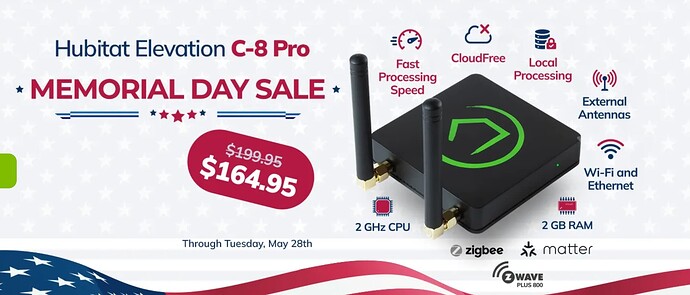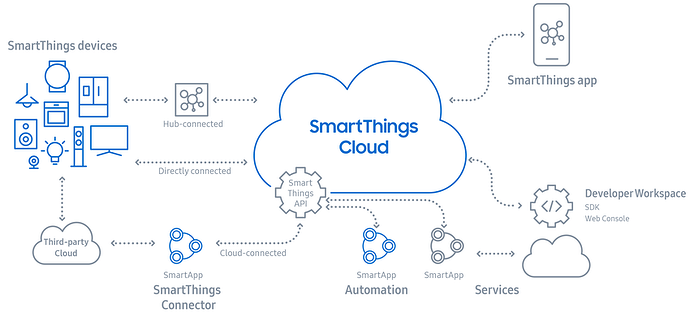All Hubitat hubs are this way.
Yes, as long as your local internet and/or router are working. You would have to also be on your local network hardwired with a desktop/laptop, OR on your local Wifi with a phone or laptop which is on the same network as the hub. You could use any internet browser (again on the local network) or the phone app as long as mobile data was shut off to force things back to your local network.
On the other hand, you cannot be remote, like at work, and have the internet go down and still control the hub via the app. Many people also don't think to shut off mobile data and have trouble connecting to their hubs in an internet outage when at home, that won't work as it is trying to go through other's servers (like Verizon) and not exclusively on your internal network.
These are cloud based devices and integrations. There are others similar to this as well where you can bring things into Hubitat, but the main processing lives within the cloud.
Anything cloud based will fail to work if they can't reach their servers. I would not rely on using these whenever possible, and in the future devices that could operate completely local if possible.
For example, having smart bulbs with no physical control (I.E. a switch) where you cannot shut them off without someone's cloud server would defeat the purpose of a local hub. Instead, use dumb bulbs with a Zigbee or Z-wave smart switch that talks completely local.
Many people recommend smart switches with dumb bulbs whenever possible. It gives you full local/physical control, plus the benefits of being able to smarten things and operate them remotely or via an app.
With other devices, you sometimes don't have much choice. You are stuck using a browser or app to do things like change RGB colors on a strip, even if the protocol is local, like Zigbee or Z-wave would be on this hub. Or you rely on the cloud for something like Alexa, but who wants to argue with Alexa about changing color or brightness on a bulb?
In the case of some of my devices, I have no smart features if the internet goes down. My hot tub is this way, it turns back into a dumb device where I have to push buttons on the machine itself to control it. And I am OK with that, it isn't a "mission critical" device.
I was trying to decide what you were asking here. What I think you are asking is the following.
Cloud services are need to:
- Do things like add or edit rules or pair new devices when not on your local network, also changing hub settings like time/date, doing hub firmware updates remotely. This can be done via an optional Remote Admin subscription.
- You can optionally purchase cloud backups for the hub in addition to Remote Admin.
- Use cloud based integrations like Alexa, Google, or similar.
Cloud services are not needed to:
- Access any of your devices, rules, or dashboards while you are on a local network. There is a local hub interface that is accessible on any device that has an internet browser.
A blend of the above:
- You need some type of internet connection from your hub to the outside world to access dashboards remotely. Dashboards and the mobile apps don't require a fee, but you have to get that data to the phone somehow.
- You also need to have internet access to do hub firmware updates, and is one method of keeping the hub clock synchronized.




